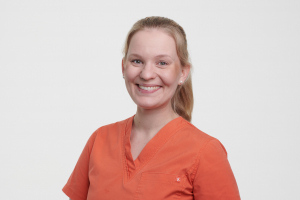Patient safety is ensured in dental care despite the pandemic
Dentistry has long been a pioneer in strict hygiene practices and an example for many other fields of medicine. Along with the outbreak of the coronavirus pandemic, the practices were further tightened, as it was feared that dental treatments might expose patients to SARS-CoV-2 virus infections. The risk was not realized to any larger extent, but further research concerning the spreading of the virus is needed.Published: 7.4.2022
Writer: Laura Lahdentausta
Picture: Shutterstock
When the COVID-19 pandemic began, there was little research information about the spreading of viruses in the context of dental care and it was feared that dental treatments might pose a risk for the spreading of SARS-CoV-2 virus infections. Therefore, in the early stages of the pandemic, non-critical dental services were suspended and treatment was restricted to emergency patients only. Within the Helsinki metropolitan area, the dental care of patients infected with SARS-CoV-2 was arranged in a separate unit dedicated for them.
In addition, the proven best hygiene practices were further tightened. For example, it was recommended that personnel wear a full-face visor and an FFP mask during any aerosol-generating procedures, patients’ medical history was comprehensively screened to identify possible coronavirus symptoms or exposures and, before any treatment, patients were asked to rinse their mouth with a disinfecting hydrogen peroxide solution.
At work, both dentists and dental nurses are exposed to spatters and aerosols that originate from the patient and the instruments. Saliva, exhaled air and possible blood splashes blend with the cooling water of drills and other instruments, thus forming bioaerosols that pass from the patient’s mouth to the air and surfaces in the treatment room.
Despite the risks, there are not many known cases of SARS-CoV-2 infection chains or occupational exposure originating from dental care. This suggests that the hygiene practices and safety measures implemented within dental services have been sufficient. However, more research on the topic is needed.
High-volume evacuation reduces the virus volume
The SARS-CoV-2 pandemic increased the need to investigate the transmission of airborne viruses and bacteria in dental care. With the funding provided by the Sakari Alhopuro Foundation, two projects have been initiated to provide more information concerning occupational safety in dental care.
The first project focused on measuring aerosol exposure and virus contamination in simulated dental care procedures. A dental phantom was set up with salivation and breathing. Bacteriophage Phi6, which is a human-harmless viral surrogate for SARS-CoV-2, was added to the saliva running to the mouth. Different dental instruments for teeth drilling and removal of dental calculus/tartar with ultrasonic scaler were performed in the phantom mouth. In addition to the use of aerosol-generating instruments, the impacts of high-volume on the aerosol content and quantity of viruses were assessed.
Measurements were done by utilising air collectors, virus culture dishes and samples collected from surfaces. The analyses are not yet completed, but the preliminary results indicate that the high-volume suction significantly reduced the aerosol and virus quantities, thus improving safety in dental care.
Samples from the full-face visor were positive for viruses so it is motivated to continue the recommendation to use a visor.
Several viruses included in the study
The second project was designed to study the quantities of viruses in actual patient situations by means of different collectors. We have collected patient samples for the assessment of not only SARS-CoV-2 virus but also other viruses, for example, herpes- and papillomaviruses. The aim is to compare the microbes found in a saliva sample from a patient with those found in air samples. By utilising various collectors, we can measure the quantity of microbes spreading in dental care when high-volume suction and protective equipment are applied appropriately. The research endeavours to find out whether the current hygiene and safety measures are sufficient, and to assess the need to add or leave out any particular measures for certain procedures.
The Sakari Alhopuro Foundation has made the initiation of these research projects possible. Without the Foundation’s grants, the projects could not have been conducted in their current extent. The entire research team is grateful for the funding received.

Doctor of Dental Science Laura Lahdentausta is currently working as a dentist specialising in periodontics at the Oral Diseases Outpatient Clinic within the Hospital District of Helsinki and Uusimaa (HUS). She earned her doctoral degree in 2018, with her thesis concerning the saliva and serum biomarkers in periodontitis and cardiovascular diseases. Her present research focuses on SARS-CoV-2 virus within the context of dental care.
